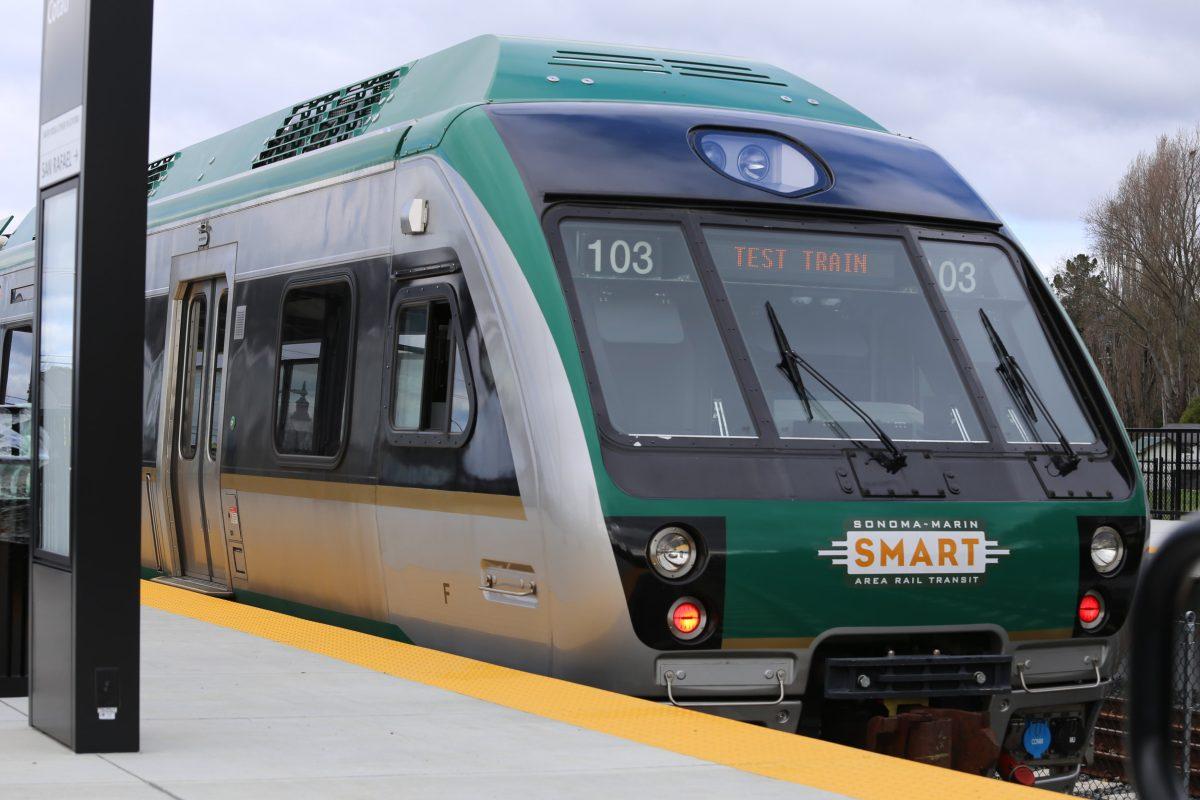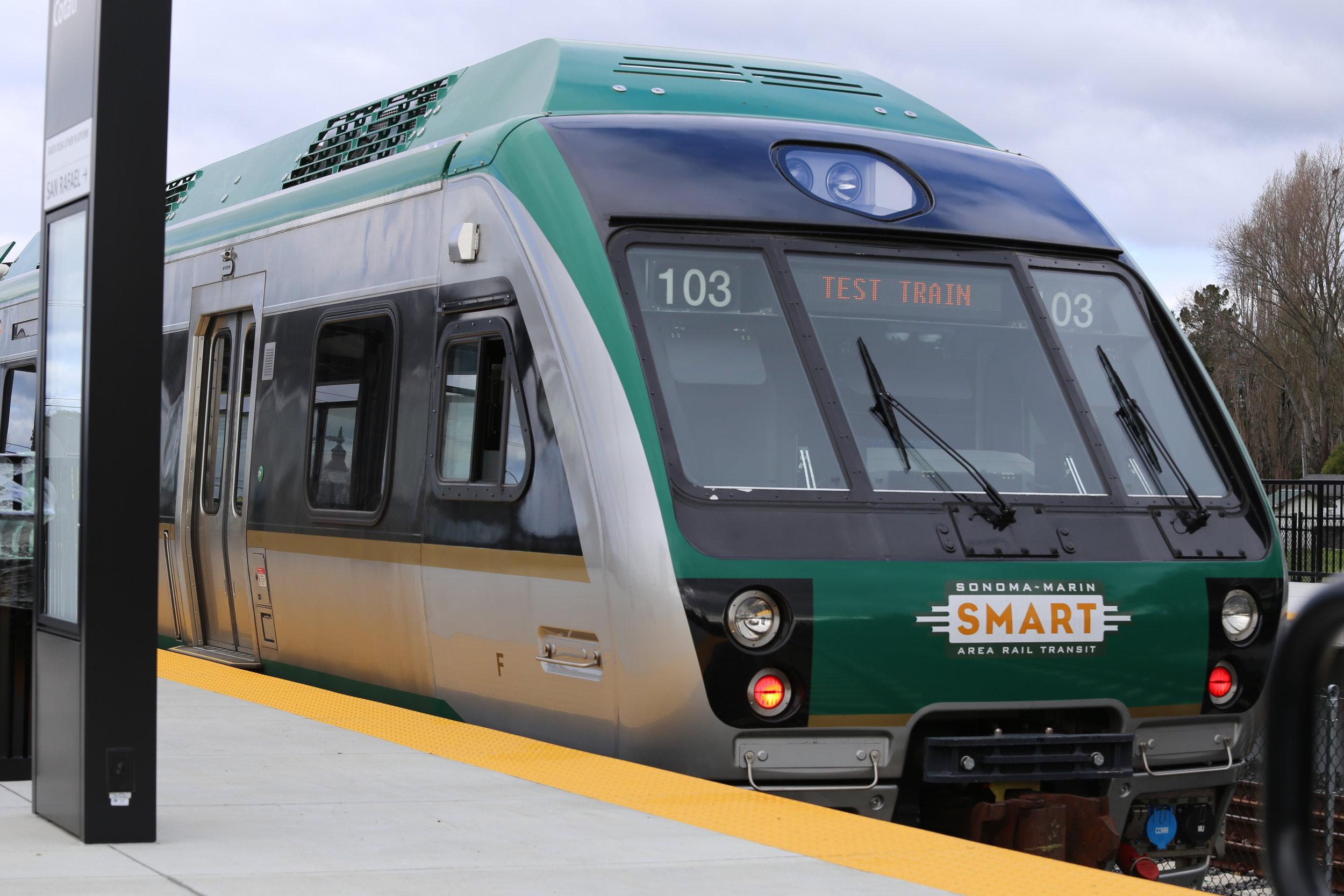The Sonoma Marin Area Rail Transit authorities predicts the SMART train will be fully operational and open to the public by the end of spring. When service begins, rides will be free – at least for the first several weeks.
While the board originally planned to have the train completed by late 2016, they delayed the project due to engine problems and the testing of new safety technology designed to prevent the train from exceeding the speed limit called Positive Train Control.
“We are still conducting our comprehensive system-wide safety testing, and we will open only when it is 110 percent safe to do so,” SMART spokeswoman Jeanne Mariani-Belding said. “Currently, we are targeting late spring.”
The board identified potential engine problems last year after looking at another transit agency in Canada that was using similar engines. According to Mariani-Belding, the Canadian trains were experiencing engine problems with their cars due to a design flaw in the crankshaft. Although the SMART Trains had not experienced the same issues, the SMART board predicted that they could face similar problems in the future. SMART just finished replacing all 14 of the engines to avoid this issue.
In addition to technical problems, the SMART board is also dealing with some policy-related controversies. Many citizens have complained about the loudness and frequency of the train horn.
In an effort to address these concerns, representatives from the various counties in the North Bay have proposed creating quiet zones, which would restrict the regular sounding of the horn barring emergency situations.
“We’ve received comments from SMART and now we are waiting to receive comments from the Federal Rail Authority,” Sonoma County Supervisor and SMART board member Shirlee Zane said. “The comments from SMART are supportive of the quiet zones, but we still have to get permission from the Federal Rail Authority.”
While Zane thinks that the FRA will be supportive of the quiet zone initiative, she is uncertain because quiet zones are relatively new and there hasn’t been a lot of data submitted on them.
The last-minute dissention of San Rafael Mayor and SMART board member Gary Phillips has proved to be another obstacle in the train’s construction. Together, with San Rafael City Manager Jim Schulz, Phillips and Schultz requested the delay of the train’s planned extension to Larkspur in a letter written to the SMART board on Jan. 23. The letter outlined Phillips’ concern that the extension would cause chaotic traffic in the already busy Bettini Transit Center.
“He is one voice on a 12-member board that represents a lot of different local entities,” Zane said in regards to the letter. “So nobody agreed with him when he brought up his contention, but we said we would work with him.”
In order to strike a compromise, the SMART board worked with Golden Gate Transit, which oversees Bettini Transit Center. Golden Gate Transit agreed to provide some extra funding to help reroute the busses in Bettini Transit Center to avoid the increase of traffic. Zane said the extension to Larkspur will continue construction as planned. The companies predict the extension to be finished by the end of 2018.
To help spark public interest in the train, the SMART board has decided from July 4 until Labor Day, tickets will be sold at a discounted rate of 50 percent off. However, it remains unclear whether or not these dates will be extended should the opening of the train be delayed further.




































